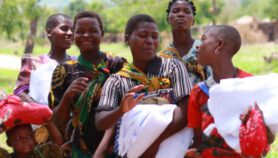Send to a friend
The details you provide on this page will not be used to send unsolicited email, and will not be sold to a 3rd party. See privacy policy.
Below is a round up of news from or about South Asia for the period 2–15 October 2008.
India eyes US$4 billion in green energy
India hopes to attract US$4 billion worth of funding for renewable energy projects in the next 5–7 years. The country hopes to double its power production from renewable sources to 25,000 megawatts in the next four years. More>>
Sri Lanka goes atomic for power generation
Sri Lanka is planning to build atomic reactors that will use its vast reserves of thorium — a mildly radioactive element — as a source of fuel to increase its power production, says its science minister Tissa Vitharana. Indian atomic scientists will help Sri Lanka draw up its design. The two countries recently signed an agreement on science cooperation in Colombo.
Pakistan to monitor crops with satellites
Pakistan will monitor its major cash crops using remote sensing technology. Plans for a US$2.1 million project for crop monitoring by the Pakistan Space and Upper Atmosphere Research Commission (SUPARCO) are an extension of its previous US$1.4 million project that covers wheat, rice, maize, sugarcane and cotton. More>>
India and United States in nuclear business
The United States Senate has passed a law that will allow US firms to sell nuclear reactors, fuel and technology to India, ending three decades of Indian isolation from the international nuclear community. The two countries signed a landmark civil nuclear cooperation agreement in 2005. More>>
Community health worker visits ‘save babies’
Visits by community health workers to poor households improves the survival rates of newborns in rural areas. The WHO bulletin cites a study in northern India, which reports a three-quarter reduction in death rates when community workers visited homes within three days after delivery. More>>
Cousin of deadly virus ‘needs genome sequencing’
Umbre virus, a cousin of the deadly Hantavirus, needs to be genetically screened for its potential to cause disease in humans, say Indian scientists. The virus was first isolated in 1955 from the malaria-spreading culex species of mosquitoes in Umbre, India. Scientists from the Christian Medical College at Vellore, who carried out genetic analyses of various Indian Umbre strains, say complete genome sequencing is necessary for more insights. More>> [129kb]
Ice dams protected ‘roof the world’
Glacial ice and debris at the mouth of the river Tsangpo might have helped the preserve the plateau of Tibet, the ‘roof of the world’. The debris acted as ice dams for the river, which prevented the power of the river — which plunges from about 10,000 feet to 1,000 in only 150 miles — from carving into the plateau, propose US scientists. More>>
Blood clot risk ‘both genetic and environmental’
Indian medical researchers say both genetic and environmental risk factors play a role in causing the blood to clot in the abdominal veins. This is the first comprehensive study on this problem from South Asia. More>>
South Asia suffering ‘alarming levels of hunger’
South Asia still has high levels of hunger, with a high prevalence of underweight children under five years, according to a new global hunger index released by the International Food Policy Research Institute. The causes include poor nutrition of mothers and poor nutrition, health, water and sanitation programmes. More>>
Aerobic microbes ‘generate more power in fuel cells’
Aerobic functions of microorganisms help generate more electricity in a microbial fuel cell — a device that converts chemical energy into electrical energy, using microorganisms as catalysts. This aids more efficient treatment of waste waters, report scientists from India. More>>
Acid treatment gains more ethanol from mesquite
Pre-treatment with dilute acid can help produce more ethanol biofuel from the mesquite tree or Prosopis juliflora, widely found in South Asia. Pretreatment releases more sugars from the tree’s cellulose, which in turn gives more alcohol. More>>
Endangered dolphins turn up in Bangladeshi waters
The world’s largest population of Irrawaddy dolphins has been found in coastal waters off Bangladesh. A joint US–Bangladesh study found precisely 5,832 of the dolphins along the country’s coast and in estuaries. The species had previously been described as critically endangered. More>>
Compiled by T. V. Padma, with additional reporting by Suhail Yusuf.
If you would like to suggest a story for this news in brief, please contact the South Asia Regional Coordinator T. V. Padma ([email protected]).













